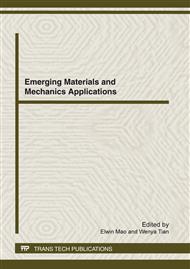p.289
p.297
p.301
p.307
p.312
p.317
p.322
p.327
p.332
Algorithm for the Inventory-Routing Problem Based on R-System
Abstract:
The inventory-routing problem is an important approach for the enterprises to save energy and improve efficiency. The improvement of the utilization rate of vehicles and the reduction of the dispatching cost can be realized by solving this problem effectively. This thesis focuses on the inventory-routing problem and put forward a heuristic algorithm based on the greedy rules whose key strategy is to cycle select the Hamilton transportation route with the current lowest unit cost. The simulation example indicates that this algorithm can effectively improve the trucking efficiency and save the transporting cost.
Info:
Periodical:
Pages:
312-316
Citation:
Online since:
March 2012
Authors:
Keywords:
Price:
Сopyright:
© 2012 Trans Tech Publications Ltd. All Rights Reserved
Share:
Citation:


